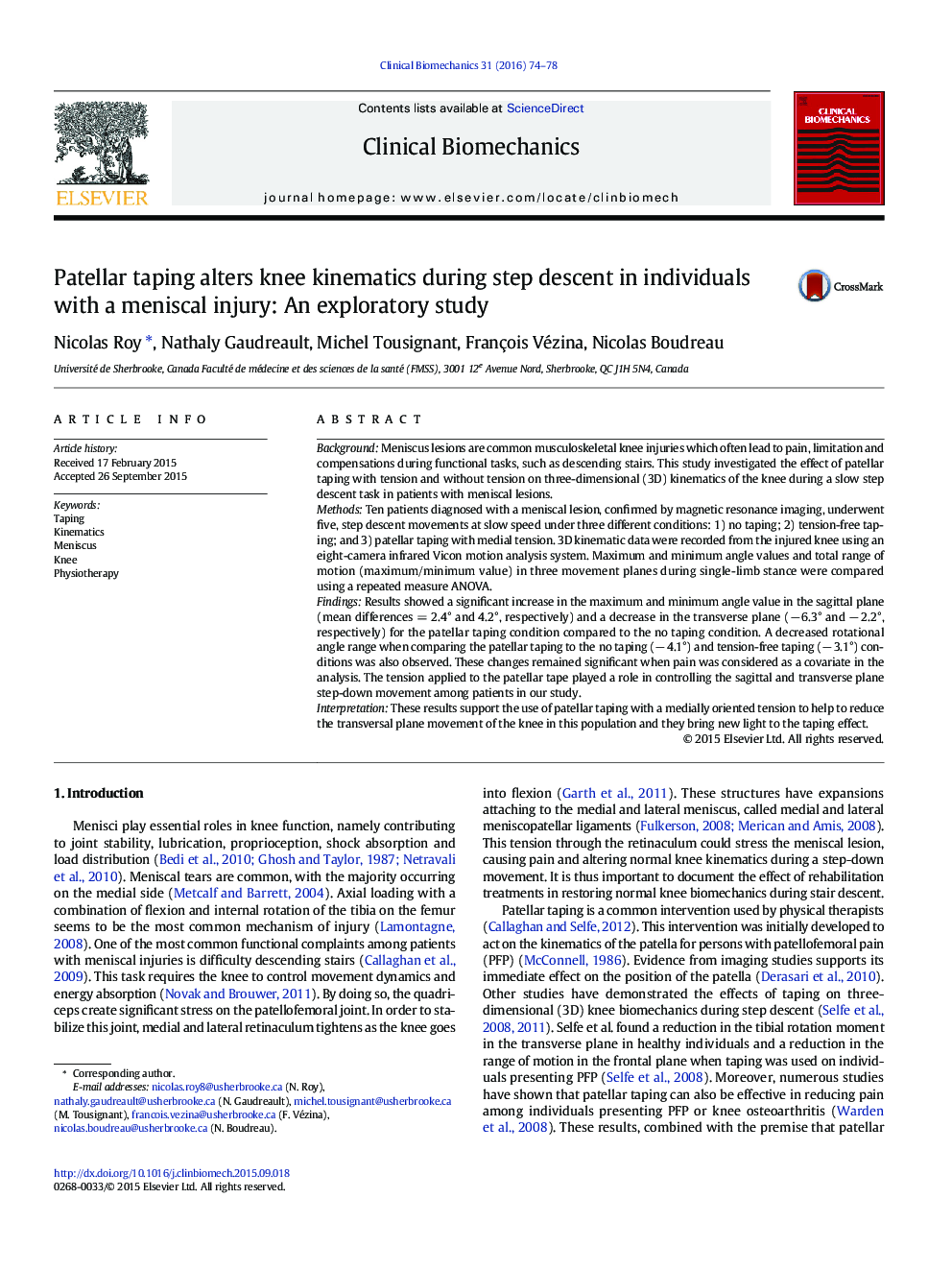| Article ID | Journal | Published Year | Pages | File Type |
|---|---|---|---|---|
| 4050171 | Clinical Biomechanics | 2016 | 5 Pages |
•We documented the 3D knee kinematics of a step-down movement with a meniscal lesion.•This is the first study that used a patellar taping with a meniscal lesion.•Patellar taping reduced maximum and minimum angles in the transverse plane.•Patellar taping had an effect on the maximum or minimum angle in every plane.•Tension applied to the patellar taping is important to alter 3D knee kinematics.
BackgroundMeniscus lesions are common musculoskeletal knee injuries which often lead to pain, limitation and compensations during functional tasks, such as descending stairs. This study investigated the effect of patellar taping with tension and without tension on three-dimensional (3D) kinematics of the knee during a slow step descent task in patients with meniscal lesions.MethodsTen patients diagnosed with a meniscal lesion, confirmed by magnetic resonance imaging, underwent five, step descent movements at slow speed under three different conditions: 1) no taping; 2) tension-free taping; and 3) patellar taping with medial tension. 3D kinematic data were recorded from the injured knee using an eight-camera infrared Vicon motion analysis system. Maximum and minimum angle values and total range of motion (maximum/minimum value) in three movement planes during single-limb stance were compared using a repeated measure ANOVA.FindingsResults showed a significant increase in the maximum and minimum angle value in the sagittal plane (mean differences = 2.4° and 4.2°, respectively) and a decrease in the transverse plane (− 6.3° and − 2.2°, respectively) for the patellar taping condition compared to the no taping condition. A decreased rotational angle range when comparing the patellar taping to the no taping (− 4.1°) and tension-free taping (− 3.1°) conditions was also observed. These changes remained significant when pain was considered as a covariate in the analysis. The tension applied to the patellar tape played a role in controlling the sagittal and transverse plane step-down movement among patients in our study.InterpretationThese results support the use of patellar taping with a medially oriented tension to help to reduce the transversal plane movement of the knee in this population and they bring new light to the taping effect.
